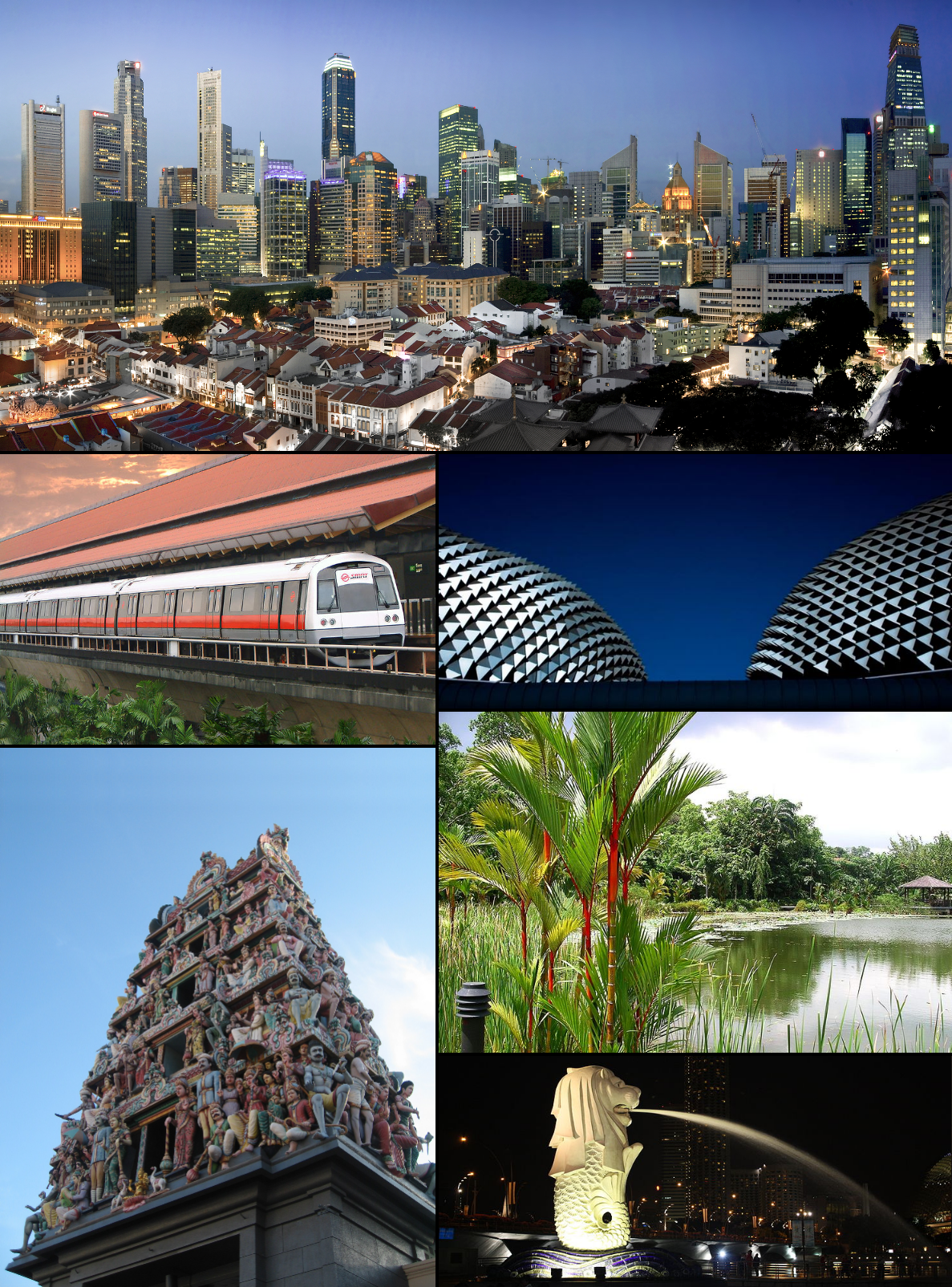10.19.10
World Wide Weather #20: Singapore
This week’s post in the global weather and climate series features Singapore.
Singapore is a country made up of 63 islands located at the southern tip of the Malay Peninsula. Singapore is located just 85 miles north of equator, thus the country has a tropical climate. The capital city of the country of Singapore is Singapore (the city takes up much of the land area on the main island). The country is 274 mi² with a population of 5.1 million and a population density of about 18,000 per square mile. This makes Singapore third overall in terms of population density, after Macau and Monaco (each with over 40,000 per square mile). Singapore has recently been working on land reclamation, by expanding the size of their islands and joining some islands to make more room for people.
Singapore was first founded in the 2nd century AD, but burned down by Portuguese raiders in 1613. In 1819, Singapore was discovered by the British East India Trading Company, who signed a treaty to use the area as a trading post. Singapore officially became a British colony in 1824, though it was lost to the Japanese in just 6 days in World War II. After Japan surrendered, the British regained the country. Singapore became officially independent in 1965.
Singapore is currently the world’s 4th leading financial center, has the fastest growing economy in the world, and has been ranked with the best quality of life in Asia (and 11th around the world). Tourism is important to Singapore’s economy, though the country most heavily relies on exports and refining imported goods (especially manufacturing). An estimated 42% of Singapore’s population is foreign, and foreign workers make up 50% of the service sector. There are four official languages in Singapore: English (taught in schools), Malay (national language but more symbolic than spoken), Mandarin Chinese, and Tamil.
A few more facts about Singapore (from Wikipedia):
- Time zone: Singapore Standard Time (UTC+8)
- Elevation: 0 to 545 feet
- Climate zone: Tropical rainforest
- Average high temperature: 88 °F (31 °C)
- Average low temperature: 75 °F (24 °C)
- Average annual precipitation: 85 inches (2,150 mm)
The hottest months in Singapore are May and June, with the wettest months being November and December. Relative humidity is often 90% during the morning and 60% in the afternoon. Haze is common from August to October, when smoke from bush fires in Indonesia may affect the country. Occasionally the country may be affected by typhoons, but since Singapore is so close to the equator, most storms would stay well north.
Current weather: Based on the climatology of Singapore, the recent weather is about average. Highs this week are around 90 °F, lows of 77 °F with dewpoints in the mid- to upper 70s (that’s what keeps the temperature from getting lower…it can’t drop below the dewpoint, thus the nighttime humidity could be quite high and miserable). Some rain is expected this week, though the country is not likely to be affected by Typhoon Megi.
A recent reader commented that the humidity in Singapore sometimes goes up when there’s a typhoon affecting Asia. I might first speculate that this has something to do with the wind direction. If the typhoon is, as Megi is, near the South China Sea, then the wind direction over the Malay Peninsula may be from the southwest. However, Singapore is so close to the equator, the winds would not be strong enough to affect moisture in this way.
But if the change in humidity occurs more so before the typhoon draws near land, I could speculate that this may have something to do with the weather pattern that is bringing the typhoon towards Asia. For example, if there’s a ridge of high pressure over eastern Asia (see below…upper level ridge and upper-level winds in black), the surface winds around Singapore may be more from the east (green arrows in figure below). These easterly winds are part of what would push a typhoon towards Asia in the first place. Without knowing a lot about the geography and weather patterns in southeast Asia, I would suspect that an easterly wind would bring increased moisture from the South China Sea. However, the prevailing wind direction is likely from the east anyway, so I’m not sure if this along the right lines or not.
Map from Google Maps. Shows idealized wind patterns in eastern Asia, with upper-level ridge and winds in black, typhoon in red, and easterly surface winds below the ridge in green.
For weather maps and information on current and forecast Singapore weather, see the National Environment Agency (Singapore’s meteorological agency website), Weather Online UK (maps, models, and forecasts for around the world), and Weather Underground.
For more information on Singapore, here’s a link to Wikipedia.
Next Tuesday I plan to take a look at the climate and weather in another part of the globe. As always, if you have any comments or suggestions for future cities, please leave a comment!


World Wide News Flash said,
October 22, 2010 at 4:41 pm
Green Sky Chaser » World Wide Weather #20: Singapore…
I found your entry interesting do I’ve added a Trackback to it on my weblog :)…
James Torres said,
November 12, 2010 at 10:52 am
With so much rain falling on Singapore today, what is your forecast for Singapore in the near future in regards to global warming?
What type of disasters is Singapore more likely to have?